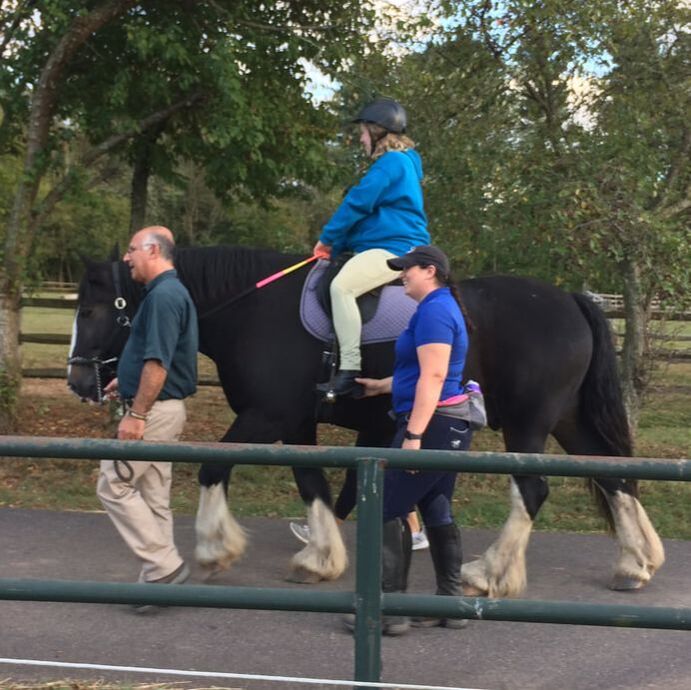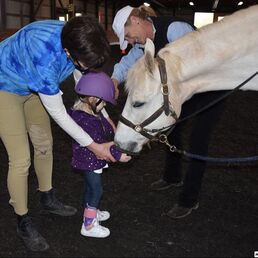WHAT IS THERAPEUTIC HORSEMANSHIP?
Therapeutic horsemanship relates specifically to partnering with the horse in therapeutic riding lessons or working on horsemanship skills on the ground with horses in the arena or stable.
There are many terms in use today for the activity that was originally called therapeutic riding, but the two terms widely used today are equine assisted activities and equine assisted therapy. Equine assisted therapy is performed by licensed credentialed medical or mental health professionals within their specialties: hippotherapy, equine facilitated mental health and psychotherapy. Equine assisted activities are performed by instructors qualified within their specialties: therapeutic riding, interactive vaulting, driving, equine experiential learning, and sport/competition coaching.
There are many terms in use today for the activity that was originally called therapeutic riding, but the two terms widely used today are equine assisted activities and equine assisted therapy. Equine assisted therapy is performed by licensed credentialed medical or mental health professionals within their specialties: hippotherapy, equine facilitated mental health and psychotherapy. Equine assisted activities are performed by instructors qualified within their specialties: therapeutic riding, interactive vaulting, driving, equine experiential learning, and sport/competition coaching.
WHAT ARE THE BENEFITS OF THERAPEUTIC HORSEMANSHIP?
PHYSICAL BENEFITS
In recent years, the benefits of therapeutic riding have gained worldwide recognition. The rhythmical, repeatable, 3-dimensional and symmetrical movement of the horse provide numerous physical benefits such as:
The ability to bond and partner with a non-judgmental horse provides the possibility of independence, while enhancing many emotional and cognitive benefits such as:
In recent years, the benefits of therapeutic riding have gained worldwide recognition. The rhythmical, repeatable, 3-dimensional and symmetrical movement of the horse provide numerous physical benefits such as:
- Increasing or reducing muscle tone
- Strengthening muscles
- Improving balance and coordination
- Promoting low impact exercise
The ability to bond and partner with a non-judgmental horse provides the possibility of independence, while enhancing many emotional and cognitive benefits such as:
- Improved self-image
- Increased ability to organize thoughts and body movements
- Increased attention span
- Increased development of speech
- Increased motivation
- Increased self-confidence
WHO CAN BENEFIT FROM THERAPEUTIC HORSEMANSHIP?
Participants in therapeutic horsemanship programs range in age from young children to seniors. Individual programs may limit who can participate based on program-specific policies such as: age limits, weight limits, ability to sit upright with minimal support or specialization in specific disabilities. Therapeutic horsemanship may benefit people with a wide range of physical, cognitive or emotional disabilities including, but not limited to:
- Cerebral Palsy
- Down Syndrome
- Autism Spectrum
- Spina Bifida
- Intellectual Disability
- Developmental Delay
- Traumatic Brain Injury
- Multiple Sclerosis
- Muscular Dystrophy
- Cerebrovascular Accident (Stroke)
- Attention Deficit/Hyperactivity Disorder
- Behavioral Disorders
- Emotional Disorders
- Learning Disabilities
- Visual and Hearing Disabilities
- Veterans
- Etc.



